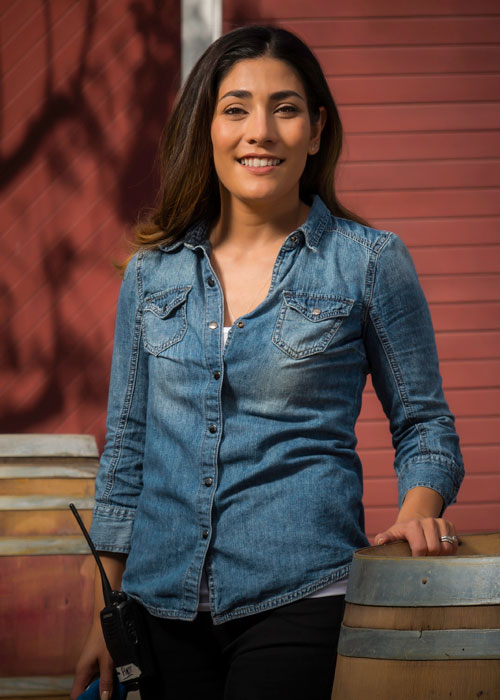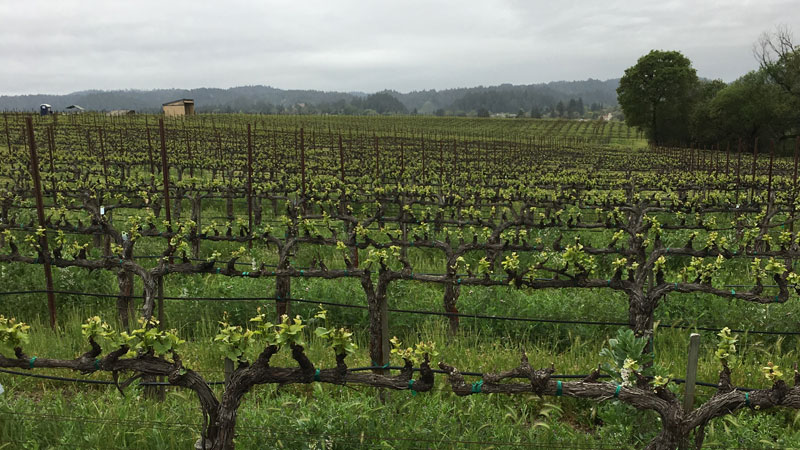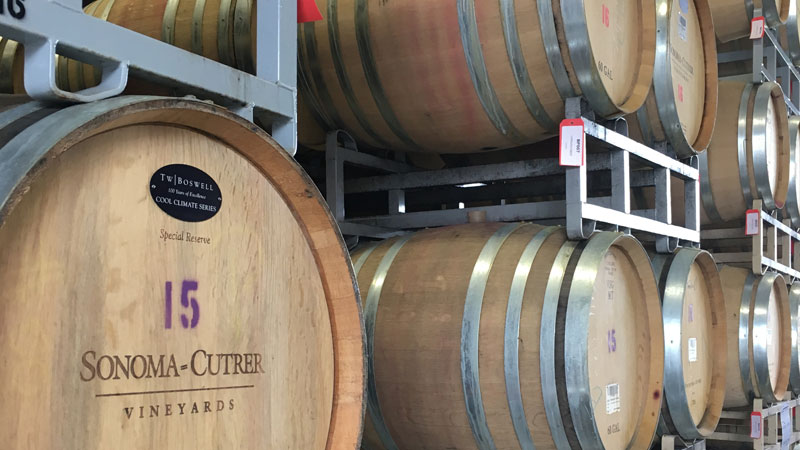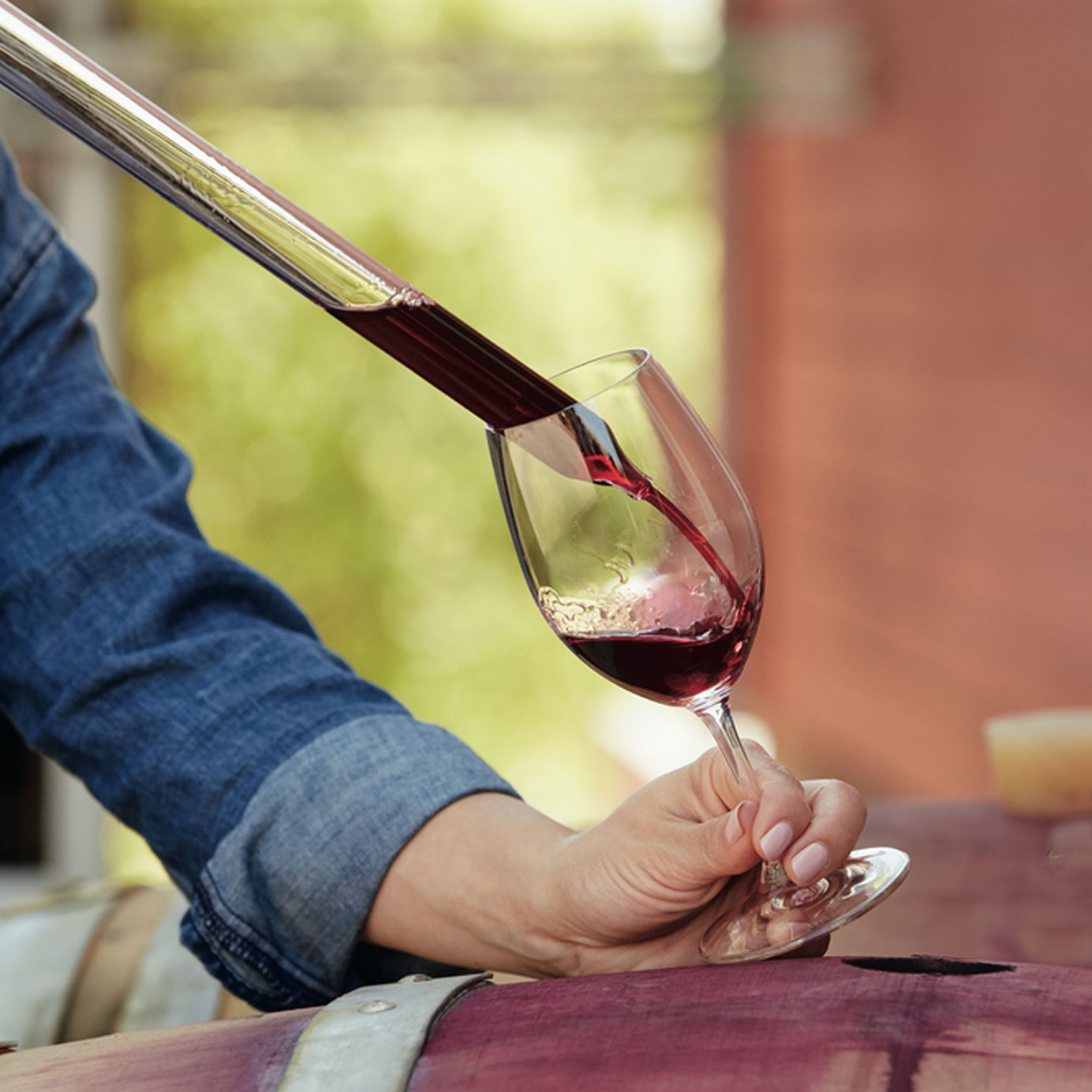“I’m trying to make sure that everyone feels empowered to try wine, and to feel confident when tasting,” Zidanelia Arcidiacono, the 36-year-old assistant winemaker at Sonoma-Cutrer, says.
Her goal is to democratize wine for people of all backgrounds and professions, especially within wineries. Educational and career advancement opportunities might be awarded to sommeliers and winemakers, but, for the most part, the people picking grapes and cleaning facilities are rarely offered the chance to attend tastings or networking events.
Arcidiacono wants to change that. Born in Texas to a Mexican mother and an Argentinian father of Italian descent, Arcidiacono identifies with the community of Latinas who harvest the grapes she makes into wine. She notes that, for many consumers, wine is often seen as expensive, prestigious, or a privilege. And, within certain communities, historical and sociocultural sensitivities surround alcohol.
Don't Miss A Drop
Get the latest in beer, wine, and cocktail culture sent straight to your inbox.“As a Latina woman myself, I want them to know that it’s not a taboo to enjoy wine responsibly,” Arcidiacono says of the women she works with at Sonoma-Cutrer. “I think sometimes wine can be perceived as unapproachable and intimidating, as if we need to know a lot about wine or spend a lot of money in order to enjoy it.”
To combat misperceptions, and to build a truly inclusive wine culture at Sonoma-Cutrer, Arcidiacono hosts community tastings, health workshops, and career development consultations for the staff.
Change doesn’t always come easy. But then again, neither do most vintages.

*
When I first meet Arcidiacono, she is thoughtfully sipping a glass of 24-year-old Chardonnay. “Diesel,” she says, identifying its primary tasting note with an infatuated smile.
I take a sip, and the wine tastes dirty or… old. I, too, detect the flavor of diesel. I don’t like it, but I’m nervous about seeming like an amateur. As I sputter out my opinion, she’s refreshingly nonjudgemental.
“Learning to appreciate wine is a journey,” Arcidiacono says. “Beginners relish a more fruity, juicy flavor that they can identify right away. As you mature, you appreciate more complex flavors: black tea, herbs. It becomes more sophisticated.”
Arcidiacono’s own experience with winemaking has been a journey, indeed.
She moved from Texas to Mendoza, Argentina when she was 2 years old. Growing up in the largest wine-producing province in Argentina, she was surrounded by mountains, vineyards, and a pervasive love of wine.
Her best friend’s grandfather was a winemaker, and she grew up listening intently to his stories about his adventures in the wine industry. She felt the electricity of passion, and knew she wanted to feel that same love for her future career. She worked the 2004 harvest at Bodega Cruz de Piedra while she was an undergrad studying winemaking at Universidad Juan Agustín Maza. What was supposed to be a harvest-only, seasonal gig turned into a full-time job that lasted three more years, and three more harvests.
Her winemaking philosophy crystallized in France in 2006. While working a harvest at Les Vignerons du Pays d’Enseruneshe in the Languedoc region, Arcidiacono fell in love with the local food and wine scene.
In Poilhes, where she lived at the time, Arcidiacono noticed that the local culture focused on locally made wine. During her days off, she liked to explore neighboring towns and restaurants. As she sampled house wines that were intentionally paired to complement the menu of the day, her tastes were opened, especially to the diversity of French rosés. It was revelatory, and would impact her career for years to come.
“The French winemaker taught me that you need to make sure that what you see, what you taste, and what you smell all align for a great rosé,” Arcidiacono says.
Ten years later, she’s making her own limited-release rosé at Sonoma-Cutrer. She was hired there as an enologist in 2007, and again in 2015, to head up the brand’s Pinot Noir production. Sonoma-Cutrer’s 2015 Vine Hill Pinot Noir won double gold in the 2018 San Francisco Chronicle Wine Competition, and Gold in the 2018 Press Democrat North Coast Wine Challenge.
In 2017, Arcidiacono launched a rosé at Sonoma-Cutrer. The 2017 rosé has since won gold in the 2018 San Francisco Chronicle Wine Competition and a Chairman’s Trophy 95 in the 2018 Ultimate Wine Challenge.

*
At Sonoma-Cutrer, Arcidiacono wants to make sure that the women who work to grow and pick grapes — the very backbone of her winemaking process — are invited to taste and fall in love with the wines they help produce.
“For me, connecting with people who specialize in different parts of the process is one of the best parts of my job,” Arcidiacono says. Her mission is to foster a community in which women feel they can enjoy wine responsibly as a revelatory, individual experience.
She co-leads an employee resource group, Growing Remarkable & Outstanding Women (GROW), which is focused on providing tools, education, and a clear perspective for women as they work to achieve their desired potential within the organization. The Sonoma-Cutrer chapter focuses on three main areas: career and self development, internal and external connections, and event development. Arcidiacono helps lead seminars, workshops, and networking opportunities. And she represents just one facet of the group, which boasts participation from the cellar, vineyards, hospitality, administration, finance, and winemaking.
She also holds quarterly tastings with the team that cultivates the vineyard. Each tasting is educational, and Arcidiacono isn’t the only one who talks. All participants share thoughts and notes about each wine and develop comments about specific vintages.
On an individual basis, Arcidiacono encourages women to go home and enjoy wine in their own lives in moderation, just as she did in France and still does today.
For some, this is a revolutionary idea. According to some research, Latinx drinkers consume less alcohol than white communities. Camila Bernal, MPH, a former research associate at Center on Addiction, writes, “Drinking is more normalized for women in U.S. culture than in traditional Latino culture.”
That said, scientific data on alcohol consumption within Latinx communities is inconclusive at best. Latinx people typically get grouped together as one race, rather than treated as distinct ethnicities with very different attitudes toward and histories with alcohol and alcoholism. While Cuban-Americans are reportedly half as likely to develop a drinking problem than non-Hispanic whites, the annual incidence rate of alcohol abuse among Mexican-Americans is more than twice that of Caucasians.

*
As I tour the winery with Arcidiacono and listen to her talk about sharing her love of wine with her coworkers, I’m taken back to our first meeting. After the aged Chardonnay, I tried a Pinot Noir that Arcidiacono made; it tasted of blueberry and had depth to my novice tongue. I loved it, and, when I told her, she beamed.
“You have to define your own style,” she says with an affirming smile. “It’s an adventure.”
It is a adventure — for individuals and the industry as a whole. The wine business is evolving, encompassing everyone from the assistant winemaker to the people who harvest grapes to the journalist who dislikes the taste of diesel. Thankfully, we can each take the journey at our own pace.
